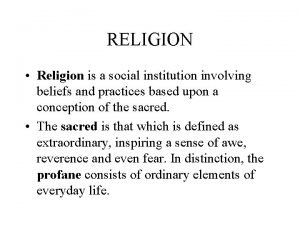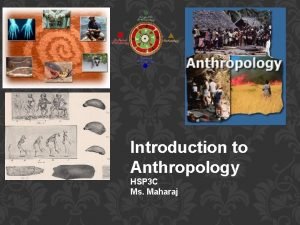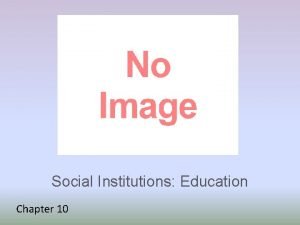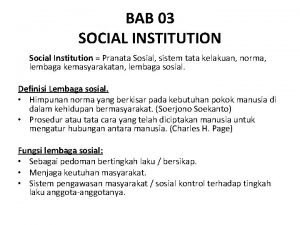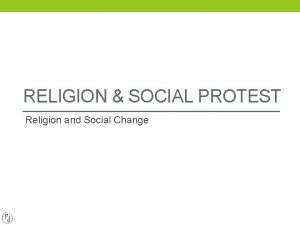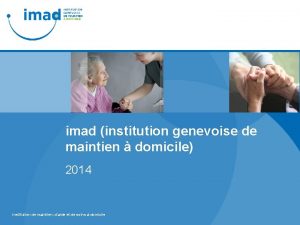Social Institution Religion HSP 3 UI Religion is










- Slides: 10

Social Institution: Religion HSP 3 UI

“Religion is very much like a fire – it can warm our homes and cook our food or it can burn down the house. ” Rabbi Brad Hirschfield

3 Views on Religion �A Creationist believes a God or Gods created the earth �An Atheist does not believe in a God or Gods and believes in an alternate explanation for the existence of humans (may believe in the “Big Bang “ Theory) Also may believe in Marx’s description of religion as the “opiate of the masses” �An Agnostic is confused about the origins of the universe, or doesn’t believe it’s important to know (“don’t know or don’t care”)

Important Statistics � 20% of Canadian adults and 11% of teenagers rate being involved in a religious group as “important” (Bibby and Posterski) � 73% of Canadians say they believe in a God or Gods (Toronto Star) � 30% of Canadians consider religion as being “important to their lives” v. s. 60% of Americans (PEW Research Center) � 23% of Canadian adults and 18% of teenagers attend church, mosque, synagogue or temple weekly (Bibby and Posterski)

2014 Worldwide Poll on Religion (50 000 people in 57 countries) � 59% of the world’s population says they are “religious” � 23% of the world’s population say they are “not religious” � 13% of the world’s population says they are “atheists” �“wealthy” people are less likely to be religious than “poor” people (17% difference)

�“college educated” people are less likely to be religious than those without “high school” education (16% difference) �There has been a 13% decline in religiosity in Canada since 2005 �Nations with the most religious populations – Ghana (96%), Nigeria (93%) , Peru (86%) , Brazil (85%) �Nations with the most atheists – China (47%), Japan (31%), Czech Republic (30%) , France (29%)

New Study from the Journal of Religion and Society �studied Western Europe and North America �found secular European nations and Canada have much less rates of homicide, abortion, sexuallytransmitted diseases and teen pregnancy than the much more religious United States �the highest rates of all of these in the U. S. are in the South and Midwest, which are the most religious states

Professor Ian Mc. Gregor of York University and research at the University of Toronto found that. . . �believing in God might help religious people block anxiety when under stress �two EEG studies showed people with “greater religious zeal” and “stronger belief in God” show less firing of the anterior cingulate cortex – an area of the brain involved in self-regulation of the response of anxiety – in response to “errors”

Classical Sociological Theory on the Functions of Religion �Social Solidarity (Durkheim) says religion is good for society as it unites it – it is “disciplinary, cohesive, vitalizing and euphoric” �Social Control (Marx) says religion is the “opiate of the masses”, that it is bad for society because it involves the upper class exploiting and controlling the lower class �Social Change (Weber) says religion has had a major impact on social innovation and the development of the economic system of Europe and the United States

Collaboration Which of the three functions of religion do you believe is most accurate ? Explain your position using examples from both the past and present.

